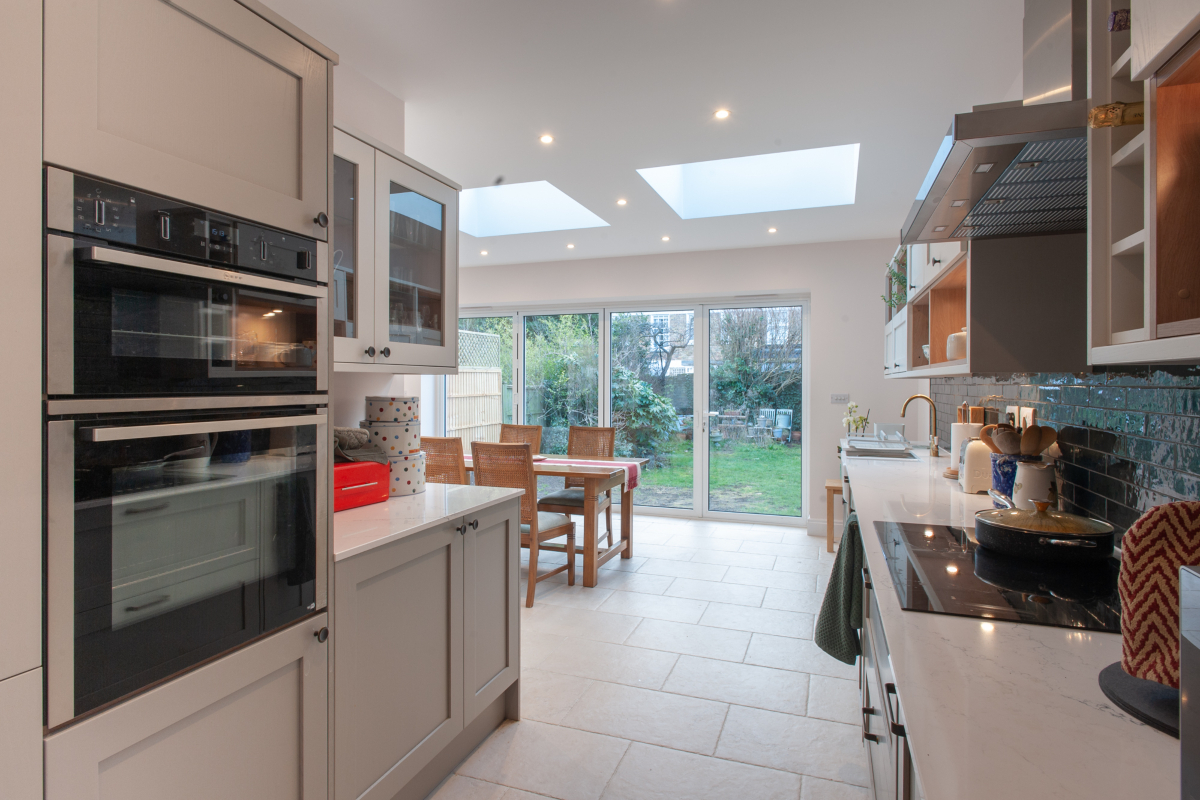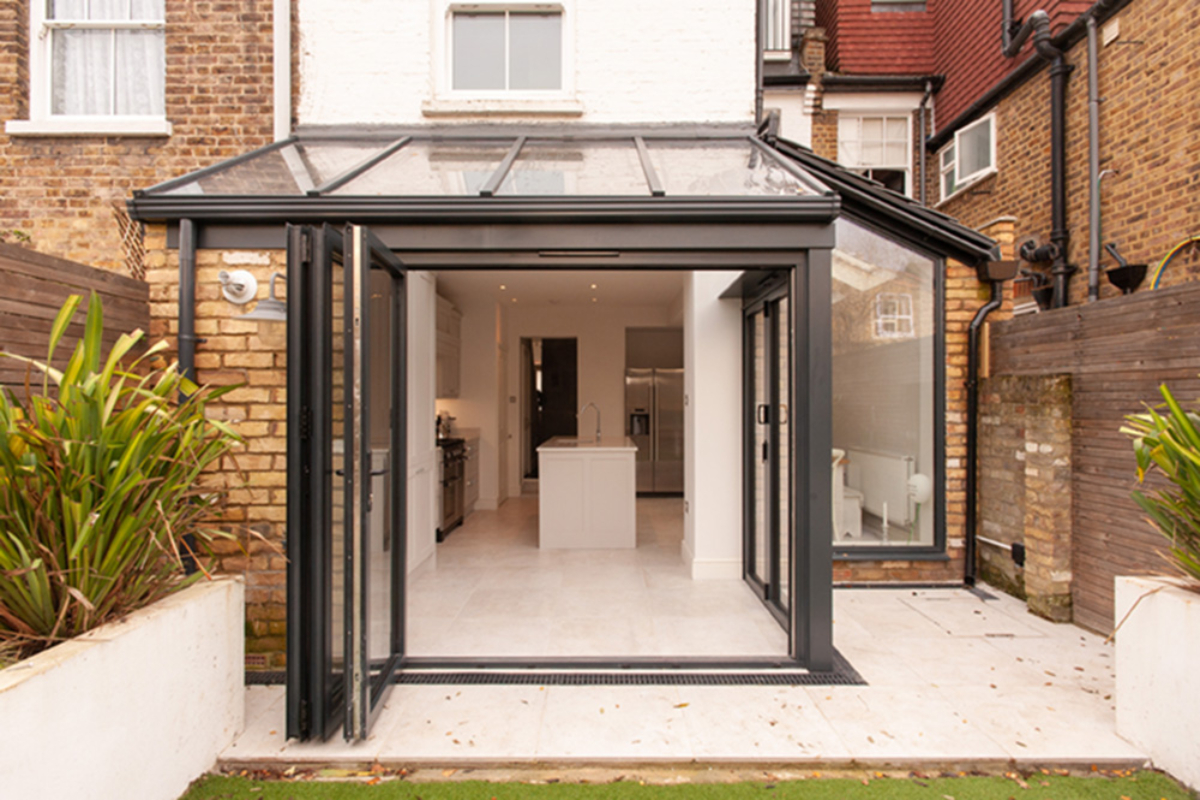Building a home extension is perhaps one of the biggest projects you will ever undertake. So why not do it right?
Sustainable home extensions allow you to create the ideal space that fits in with your needs, budget, and timeline; while also allowing you to build a long-lasting addition to your home that is good for you, your family, and the planet.
This is because sustainable extensions are not just energy-efficient and durable, they are also the perfect way to reduce costs, wastage, and toxicity from our homes.
So, how do you go about creating the perfect sustainable extension? Here are our top tricks and tips:
1. Use energy-efficient appliances
Upgrading your boiler, switching to energy-efficient heating and cooling systems, and switching out old and energy-draining appliances with energy-efficient alternatives is a surefire way of reducing your energy consumption.
Appliances are rated on an A to G scale. So, an A-rated appliance uses significantly less energy than a B or C-rated one. This includes everything from ovens and refrigerators to washing machines and kettles. The size of the appliance also impacts its energy efficiency. So, consider purchasing smaller or mid-sized devices to save on energy bills.
Similarly, LED lights consume up to 75% less energy compared to incandescent light bulbs. Making the change to LEDs is therefore a proven way to increase the energy efficiency of your home.
2. Invest in insulation
Often, the most effective way of ensuring the energy efficiency of your home is by reducing the heat lost from it. Upgrading your insulation is therefore the obvious solution.
Insulating your home is a multi-pronged process where everything from the floors, windows, and walls must be considered. This includes solid walls, cavity walls, and especially the loft space. Each of which loses considerable heat throughout the year, and requires a different insulation strategy.
Similarly, replacing single-glazed windows with double or triple-glazed ones prevents heat transfer. And though this process may have a high initial cost, proper insulation helps regulate indoor temperatures, thereby helping you to save energy, and money, in the long run.
3. Incorporate designs that utilise natural light
The installation of cleverly-placed windows and skylights will allow you to optimise the amount of natural light that enters your home. This strategy, (also known as daylighting), can significantly reduce the use of artificial lighting within your home during the daytime, and thereby directly leads to reduced energy usage and lowered utility bills.
Similarly, the extension can be oriented to maximise natural light and provide passive solar heating. For example, large windows on south-facing walls enable you to capture ample sunlight during winter.
4. Ensure adequate ventilation
In addition to upgrading your HVAC system to a more energy-efficient option, you could also design the extension to promote natural ventilation through strategic window placement and the use of cross-ventilation to reduce the reliance on mechanical cooling.
5. Shift to renewable energy sources
Consider installing solar panels on the extension’s roof to generate clean, renewable energy. The installation of solar panels to generate electricity has an obvious and dramatic effect on not just your energy bills, but also on your carbon footprint.
This is because, while you reduce your dependency on fuels, you can even take advantage of financial incentives like Feed-In Tariffs (FITs) which allow you to get paid for the energy you produce.
6. Install a green roof or a living wall
A green roof with vegetation provides insulation, absorbs rainwater, and enhances biodiversity. Green roofs also contribute to improved energy efficiency.
Alternatively, you could incorporate a living wall with climbing plants to add natural beauty, improve air quality, and provide additional insulation.
7. Use sustainable materials
The building materials used, their source, their environmental impact, and their durability, all have a profound impact on the sustainability of your home.
Using materials that are sourced locally helps minimise transportation-related carbon emissions. Locally sourced materials therefore have a lower environmental impact and also enable you to support the local economy.
Incorporate recycled or reclaimed materials into the construction to reduce the demand for new resources. This can include reclaimed wood, recycled steel, or recycled glass.
From the roofing material to cabinets, countertops, floors, and walls, some numerous options and alternatives allow you to make your home eco-friendly. Finding the perfect material, is, therefore, often simply a matter of research and diligence.
Natural materials such as clay and lime are wonderful options for walls as they are breathable, and allow moisture to escape outside.
Reclaimed wood, bamboo, stone, cork, rubber, or even PlyFix (made from recycled plastic bottles!), are all incredible options for your floors. The final choice then depends on the availability, cost, and aesthetic you seek.
8. Use eco-friendly paint
Though not nearly as common as it ought to be, environmentally friendly paints are a great way of ensuring the health of your household and the planet.
Free of the toxic chemicals that make up conventional paint products, eco-friendly paints are made from raw, organic materials, are non-toxic, and degrade without releasing chemical pollutants.
9. Focus on the efficient usage of water
Much like electricity, using water consciously and efficiently makes a big difference in the sustainability of your home.
Installing a rainwater harvesting system allows you to collect filtered water which may be used to water the garden, flush toilets, or fill the washing machine.
Similarly, opting for water-saving shower heads, low-flow taps, and low-flush toilets helps decrease your water and energy usage.
10. Invest in smart home technologies
Smart home technologies are the ideal way to align your sustainability goals with your modern home. This is because they provide efficient energy management through the use of programmable thermostats, smart lighting systems, and energy monitoring devices.
Automated systems are also used to optimise energy usage based on occupancy and preferences, by enabling the control of the heating, cooling, and lighting systems remotely.
Sustainable living is not just a fad. It is the ultimate way of life. After all, sustainable homes are the best places for your family to grow and thrive.
Sustainable home extensions involve a comprehensive look at the project as a whole; from the initial design to the environmental impact during and after construction. This means incorporating eco-friendly practices, materials, and technologies to minimise environmental impact and enhance energy efficiency. All while creating a forever home for your family, without compromising the future of the planet.
All of this may sound complicated. But with a few good ideas, and with the right energy and extension experts by your side, designing and building the perfect sustainable extension is the simplest it has ever been.
At Good Design and Build we pride ourselves in offering you a complete solution, from design to build. See our recently completed projects, get inspired, and start your dream home journey with us today!




